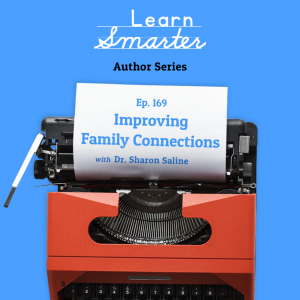Click here to read Dr. Saline’s article on YourTango. Click here to read the original blog post by Dr. Saline. 
Author: christina
The Local Moms Network – The Pandemic & ADHD: Why More Moms Are Being Diagnosed
Cooling Down Conversations in Neurodiverse Families: De-escalate and do-over with ‘WAIT-Now’ and ‘Take Back of the Day’
 Have you ever said something to your child or teen that you wished you could take back? In the heat of the moment, it’s all too easy to let our emotions take over instead of choosing our words carefully. Most parents lose their cool at one time or another. Similarly, many neurodiverse kids and teens who struggle with impulsivity and self-regulation can say things they wish they hadn’t. Cooling down conversations once they’ve heated up doesn’t come easy for most people. Jesse, age 14, told me: “Sometimes I interrupt too much. I can reign it in if I need to, but I’m not always aware that I’m doing it.” We all have said the wrong thing during a stressful conversation, instantly regretted it, and wished for a “do-over” button. That’s why I created two tools to help you and your family better manage escalations and improve communication.
Have you ever said something to your child or teen that you wished you could take back? In the heat of the moment, it’s all too easy to let our emotions take over instead of choosing our words carefully. Most parents lose their cool at one time or another. Similarly, many neurodiverse kids and teens who struggle with impulsivity and self-regulation can say things they wish they hadn’t. Cooling down conversations once they’ve heated up doesn’t come easy for most people. Jesse, age 14, told me: “Sometimes I interrupt too much. I can reign it in if I need to, but I’m not always aware that I’m doing it.” We all have said the wrong thing during a stressful conversation, instantly regretted it, and wished for a “do-over” button. That’s why I created two tools to help you and your family better manage escalations and improve communication.
Cooling Down Conversations with Two Main Strategies
 The WAIT-Now method helps you and your child take that needed pause to reconsider what you’re saying, why you’re saying it, and how you might be able to express yourself differently. Instead of blowing your cool and regretting it later, you’ll practice regaining control of the conversation, staying calm and communicating more effectively. If and when something regrettable is said, Take Back of the Day allows everyone in the family one opportunity to take it back, reconsider it, offer an apology if desired and restate what was on their mind. Family members accept this offering, practice forgiveness, and move on past the friction. Let’s take a closer look at each of these tools and how to apply them.
The WAIT-Now method helps you and your child take that needed pause to reconsider what you’re saying, why you’re saying it, and how you might be able to express yourself differently. Instead of blowing your cool and regretting it later, you’ll practice regaining control of the conversation, staying calm and communicating more effectively. If and when something regrettable is said, Take Back of the Day allows everyone in the family one opportunity to take it back, reconsider it, offer an apology if desired and restate what was on their mind. Family members accept this offering, practice forgiveness, and move on past the friction. Let’s take a closer look at each of these tools and how to apply them.
De-escalate with the “WAIT-Now” method
The WAIT-Now Method stands for: “Why Am I Talking Now?” It is an approach that teaches self-control by focusing on self-evaluation (metacognition).
How it works:
Rather than giving in to your automatic response in a tense or uncomfortable situation with your kids, you de-escalate by actively telling yourself to WAIT. Notice what you are saying to your child or teen, how they are responding and where the conversation is headed.  If it’s going downhill, pause and ask yourself these questions:
If it’s going downhill, pause and ask yourself these questions:
-
- Why am I talking now?
- Do I need to be saying this?
- Is this a one-way lecture or a two-way conversation?
How do we notice what’s going on with the other person in the conversation What are the signs that someone is paying attention to you or has drifted off? By slowing down to self-reflect, you become better equipped to manage the situation and respond to your child’s needs at that moment. Cooling down conversations relieves the tension so you can listen and respond more intentionally. Moreover, WAIT-Now offers you an opportunity to demonstrate, model, and teach your child how to think through choices about what they say and when they say it.
Why it helps:
 Many children, especially neurodiverse kids, struggle with communicating, managing their emotions and picking up social cues. We, as their loving parents, must guide them toward better outcomes, teaching them by example. As children move into adolescence, stress, conflict, and anxiety become more common. Teens experiment and try new things, learning what works for them and what doesn’t along the way. They vacillate between pushing parents away and then relying on them. It’s confusing for everyone, and often results in a terrain of emotional minefields. The bottom line is that neurodiverse kids with executive functioning challenges, just like kids without them, want to feel heard. In fact, they seek this more often than they want solutions. They lash out at you because you are a safe arena to express their frustration. The WAIT-Now Method helps enable our children to manage their own big emotions. It fosters a more peaceful, constructive and mutually-respectful environment for your family.
Many children, especially neurodiverse kids, struggle with communicating, managing their emotions and picking up social cues. We, as their loving parents, must guide them toward better outcomes, teaching them by example. As children move into adolescence, stress, conflict, and anxiety become more common. Teens experiment and try new things, learning what works for them and what doesn’t along the way. They vacillate between pushing parents away and then relying on them. It’s confusing for everyone, and often results in a terrain of emotional minefields. The bottom line is that neurodiverse kids with executive functioning challenges, just like kids without them, want to feel heard. In fact, they seek this more often than they want solutions. They lash out at you because you are a safe arena to express their frustration. The WAIT-Now Method helps enable our children to manage their own big emotions. It fosters a more peaceful, constructive and mutually-respectful environment for your family.
The WAIT-Now method is for the whole family.
Teaching WAIT-Now starts with a calm conversation with your child or teen. Explain what it is and why it’s a technique worth trying. Emphasize that this is something your whole family can work on, parents and children alike. When we frame a new experience or approach in a way which highlights the benefits for our child or teen, they are more likely to be receptive. 
Here’s the tough part for parents: We need to practice this skill set so our kids can feel what it is like to receive it.
Kids who shut down during an argument because they feel lectured or nagged are demonstrating important things: overwhelm and exclusion. Cooling down these conversations is just as important as calming ones fueled with anger. Their shutting down behaviors show that they can’t take in any more information, or they sense that their input doesn’t matter. When you see these signs, pause and assess why you are talking. Should you say everything you are thinking? Listen to your kids and reflect back what you hear them say. This is typically a more effective intervention than telling them what to do. It honors who they are and what makes sense to them. It shows you are attuned to their needs and goes a long way in building trust and closeness between parent and child.
Take back and try again with a “Take Back of the Day”
You can build upon WAIT-Now by establishing a practice I call “Take Back of the Day.” You get one do-over, and take back something you regret saying.
How it works:

Model for your children how to admit to your mistakes and how to move forward with care and grace. Apologize if need be, and offer up a different approach or more carefully chosen words. We all do or say the wrong thing now and again, and taking responsibility for our failings is a crucial life skill. Show your child how to recover from hurtful words or actions in a loving and respectful manner. When you practice and teach the WAIT-Now method and its companion, Take Back of the Day, you empower your child to learn to monitor and express themselves differently. Cooling down heated conversations will come easier for all of you. WAIT-Now and Take Back of the Day foster the listening, compassion and engagement neurodiverse kids and their families need to live with more closeness and better communication.
Read more blog posts:
- Tone of Voice Awareness in Neurodiverse Families: How to practice self-regulation in family conflicts
- ADHD and Anger: Tools for Reducing Family Conflict by Starting with Yourself
- Beyond Sibling Rivalry: How to Mediate Sibling Relationships Complicated by ADHD
Watch on YouTube:
- ADHD and Oppositional Defiance (ADDitude Mag Q&A with Dr. Saline)
- Anger Management with ADHD (ADDitude Mag Q&A with Dr. Saline)
- How to Get Your Teens to Open Up (WWLP 22 News interview with Dr. Saline)
Deeper dive: https://drsharonsaline.com/product/apologies/ https://drsharonsaline.com/product/home-seminar/
22 News Mass Appeal: Planning successful summer outings with neurodiverse children
YourTango: Back To School With ADHD And COVID Uncertainty (Again) – Reprinted
Click here to read Dr. Saline’s article on YourTango. Click here to read the original blog post by Dr. Saline. 






